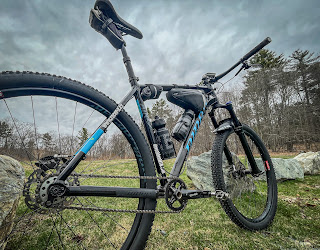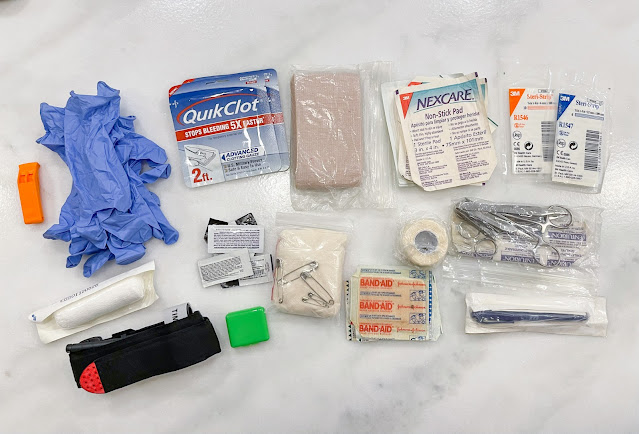Let's face it, it's inevitable that you or one of your riding compatriots is going to crash. Hopefully there will be no serious injuries and all you'll get is a good story and a good laugh, maybe make it on to #fridayfail on Pinkbike.com. But, someday, something more significant might happen so you should probably be ready.
In my mind, being ready requires two things: knowledge and supplies. I do happen to have a fair bit of medical knowledge, but until research is done to determine if oak leaves are better for packing a wound over maple leaves, I'd prefer some good old fashioned medical supplies.
If you don't have much medical knowledge, I strongly encourage you to take one of our courses--we cover common trail injuries and include CPR certification and Stop The Bleed certification.
Once you've got enough knowledge to be dangerous, it's time to put a kit together. You *could* buy a first aid kit, but I really don't think most of the commercially available kits are that great. Most seem to favor quantity over quality and include stuff that I personally think is unnecessary. I don't want 20 little band-aids, I want a tourniquet. Some kits I found included items like sunscreen or lip balm, which to me, is almost like carrying hair gel.Anyway, I figure that most medical issues that arise on the trails can be broken down into minor, moderate, and severe.
Minor injuries, or what another writer simply called "boo-boos" are the small cuts and scrapes that probably won't slow a ride down. I really don't need a "boo-boo kit." If I *need* a band-aid, well, I don't really need one.So, I think about a kit that will have supplies for moderate to severe injuries; injuries that will either significantly curtail a ride or require some outside assistance. I want a kit that I can take with me on all my rides, one that will have important stuff, but not be so onerous that I'll stop carrying it; a kit that will work for most common injuries that would occur on a ride and would provide an hour's worth of stabilization and support. A kit like this takes a lot of thought and judgement. I can't carry everything for every possibility, and let's face it, like most ER providers, I'm mostly useless without a CT scanner.
What will I take? An off-the-shelf tourniquet could be life or limb saving, is inexpensive, and light enough to pack easily. An ACE wrap might be good enough as a tourniquet if needed, with a stick or long Allen wrench used to crank it tight, and an ACE wrap could also of course be used to help close a wound or stabilize a sprain or fracture. Should I pack & carry both? There's no right or wrong answer on what to take, and there's probably going to be something I'd wish I'd had, even if I had a kit 7 times as big.
I came up with a supply list that I think will have lots of uses, and will be relatively easy to carry.
But, before I talk about the contents, I'll mention the pack I chose. It's the mini frame bag by Lead Out. At just under $75, it's not cheap, but was at that perfect intersection of small enough, but big enough, and easily transferrable to and from all my bikes. Seems well constructed and should be durable.
- emergency whistle
- nitrile gloves
- QuickClot
- ACE wrap (folded, not rolled)
- Non-stick pads
- Steri-strips
- Gauze wrap
- Small packs of antibiotic ointment
- Triangular bandage w/ safety pins
- Large band-aids
- Roll of tape
- Skin marker
- Small pack of tools (small scissors, needle tweezers, etc)
- Tourniquet
- Small pill box with: 1000mg acetaminophen, 800mg of ibuprofen, 81mg chewable aspirin x 4, 50mg of diphenhydramine (benadryl), 40mg of famotidine (pepcid), 60mg of prednisone
- EpiPen (prescription only)
- I have a splint that I'd like to start carrying, will probably put in a different spot
Is this too much?
Too little?
Something you'd recommend?
Let me know in the comments!
Please remember, the information presented here, including but not limited to, text, graphics, images and other material contained on this website are for informational purposes only. No material on this site is intended to be a substitute for professional medical advice, diagnosis or treatment.








Comments
Post a Comment